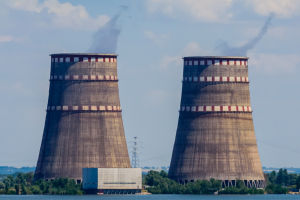For centuries, wind turbines and hydraulic machinery have been integral to increasing productivity by replacing human and animal power.
However, the widespread use of modern electromechanical power and the discovery of oil fields in the Middle East in the 1950s slowed down the development of wind turbines.
In the early 1970s, the "oil crisis" brought attention to the issue of energy tension. People began to recognize the instability and limited supply of conventional fossil fuels and the search for clean renewable energy became a pressing matter. Wind energy, as a renewable and non-polluting source, regained attention.
A wind turbine is an electrical device that converts wind energy into mechanical work, which drives the rotor to rotate and eventually output AC power. A wind turbine generally consists of a wind turbine, generator (including device), regulator (tail), tower, speed limiting safety mechanism, and energy storage device, among other components.
The working principle of a wind turbine is relatively simple. The wind turbine rotates under the action of the wind, which transforms the kinetic energy of the wind into the mechanical energy of the wind turbine shaft. The generator rotates under the drive of the wind turbine shaft to generate electricity. Broadly speaking, wind energy is also solar energy, so it can be said that a wind turbine is a kind of thermal energy utilization generator with the sun as the heat source and the atmosphere as the working medium.
Wind turbines contain two energy conversion processes wind energy to mechanical energy and from mechanical energy to electrical energy. In traditional wind turbines, the main shaft, gearbox, flexible coupling, and brake are used as transmission devices. The speed-increasing gearbox increases the lower speed of the wind turbine input to the required speed of the generator to meet the working characteristics of the generator.
Wind energy is volatile, and the grid requires stable grid-connected voltage and frequency. Wind turbines can effectively solve this problem through mechanical and electrical control.
Direct-drive units use permanent magnet synchronous generators or electrically excited synchronous generators, which simplify the drive train. Because of their low speed, they have more poles and are bulky, which increases the difficulty of transportation and lifting.
Inside the wind turbine, there is an important mechanical part, the gearbox. When the rotational speed of the fan blade is very low, it cannot reach the rotational speed required by the generator to generate electricity. Therefore, it must increase the speed by up to 50 times or more through the gearbox to make the generator generate electricity. Such a role makes the gearbox have another alias, the speed increase box. At the same time, if the speed of the fan blade is too fast, the eccentricity will be greatly enhanced and the inertia tendency will break the balance of the wind turbine itself, thus causing the fan blade to break.
Another important factor related to wind turbines is their weight. Once the fan blade weighs up to tens of tons rotating at high speed, the base will not be able to withstand the pressure and may collapse. For these reasons, the generator's huge fan blades cannot rotate too fast.
Therefore, every wind turbine is equipped with a speed-limiting device to control the rotating speed of the fan blades. If the rotating speed of the fan blades is too fast, the speed limiting device will work to limit the rotating speed of the fan blades, to control the rotating speed of the wind turbine blades.


